Home > About us
Update:March 27, 2025
Main content starts here.
1. Development of New Varieties
Selection of Second and Advanced Generation Plus Trees
Growth and wood quality of trees are the key factors for the success of forestry business. Currently, almost all of seedlings of Japanese cedar (sugi: Cryptomeria japonica) and Japanese cypress (hinoki: Chamaecyparis obtusa), the main tree species for forestry in Japan, are produced from the clonal seed orchards of the first generation plus trees.
In order to provide new varieties with better growth and wood quality, we have been implementing selection of plus trees of advanced generation from the second generation plus trees in collaboration with local governments and institutions.
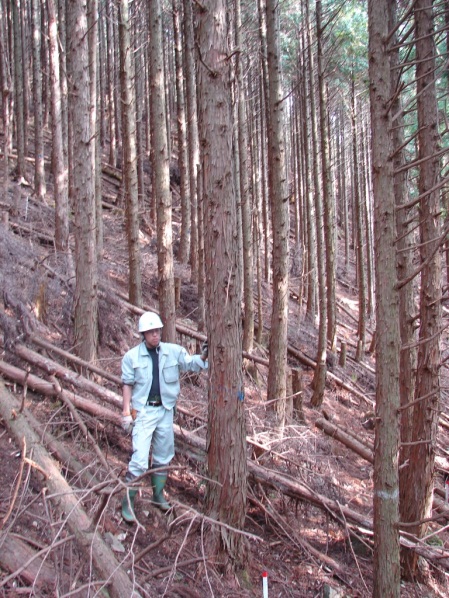 |
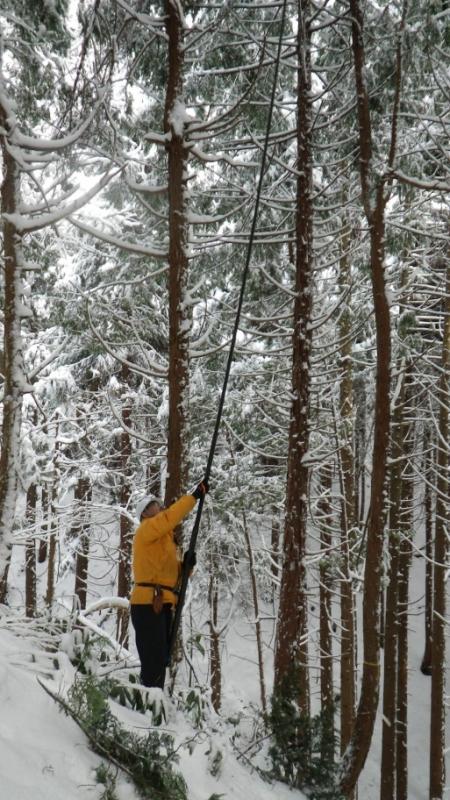 |
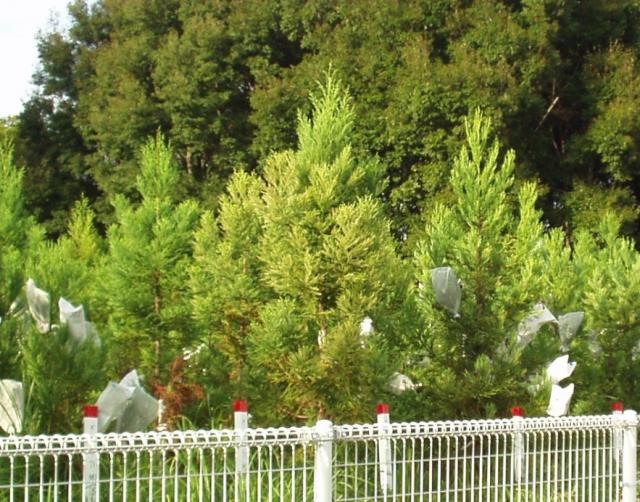 |
|
| Candidate for 2nd generation plus tree of Japanese cypress | Collecting scions for grafting from a candidate tree | Clone bank of the candidates for 2nd generation plus trees of Japanese cedar |
Specified Mother Trees (SMTs)
The Act on Special Measures concerning Advancement of Implementation of Forest Thinning, etc. (revised in May 2013 and extended in April 2021) stipulates that the Minister of Agriculture, Forestry and Fisheries designates varieties of cedar and cypress which show particularly outstanding traits as growth and produce about less than half of pollens than ordinary ones as “Specified Mother Trees” and promotes their diffusion. In accordance with the law, we apply for registration of our varieties that meet the criteria and distribute the foundation stock of Specified Mother Trees to prefectures and other entities*. So far, 56 varieties of cedar and 41 varieties of cypress we developed are designated as SMTs.
*“Entities” refers to the proprietors that are licensed by prefectures according to the Forest Thinning etc. Act (revision in 2013).
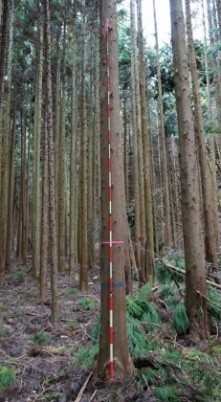 |
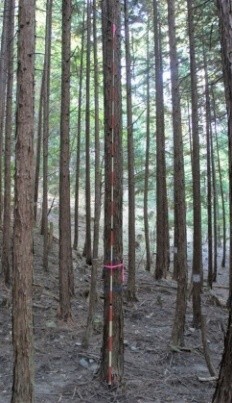 |
| SMT of Japanese cedar | SMT of Japanese cypress |
PWN (Pine Wood Nematode) - Resistance Breeding
The pine wilt disease is an epidemic of Japanese native pines caused by pine wood nematodes (PWN: Bursaphelenchus xylophilus) vectored by longhorn beetles (Monochamus alternatus). This disease had first broken out in the vicinity of the port of Nagasaki in 1905. In 1960s this disease became epidemic in the western part of Japan, later expanding toward the east and north. Now all area of Japan except Hokkaido is under infection.
We have been developing PWN-resistant varieties of Japanese red pine (Pinus densiflora) and Japanese black pine (P. thunbergii) in collaboration with prefectural research centers.
Development method of resistant varieties
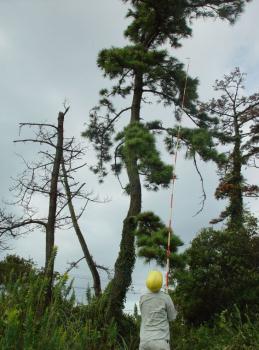 |
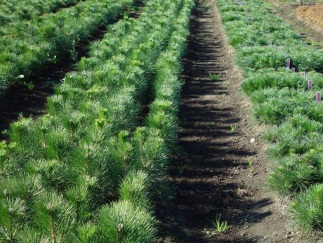 |
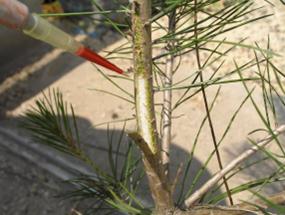 |
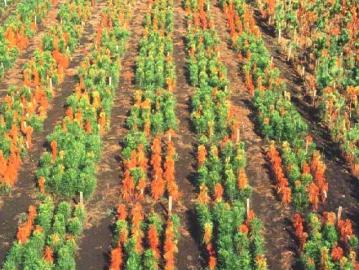 |
| Collecting cones of surviving pines in outbreak areas | Preparation of saplings for inoculation test of pine wood nematodes | Inoculation test of pine wood nematodes | Selection of resistant trees |
Reforestation of pine stands
 |
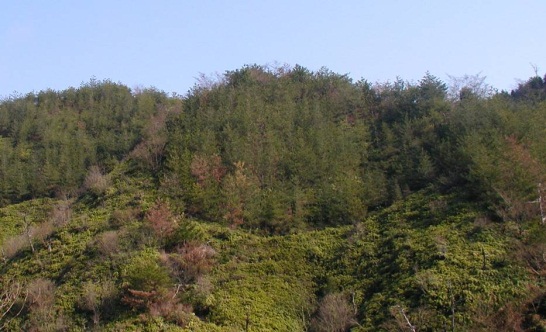 |
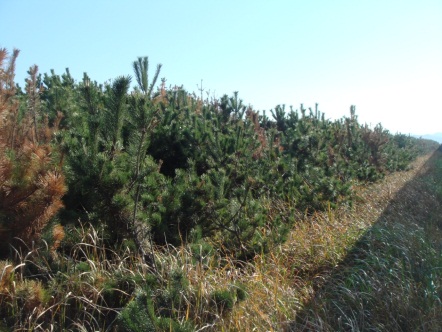 |
|
| Clonal seed orchard of resistant varieties | Plantation of PWN-resistant red pines to damaged mountains | Plantation of PWN-resistant black pines to damaged coasts |
Breeding for Reduction of Pollen Allergies
Since allergies caused by tree pollens have been a social issue in Japan, we have developed “less-pollen varieties” of Japanese cedar and Japanese cypress by selecting from plus tree populations. These varieties bear no or few male flowers in average flowering seasons and bear only a small number of them (less than 1% of average trees) even in abundant flowering seasons.
We have also developed pollen-free (male-sterilized) varieties of cedar, which bear male flowers but produce no pollen in the anthers. “Sugi Mie-Funen (Kansai) no.1” is one of such varieties developed at the Kansai Regional Breeding Office, FTBC, in 2007.
Now we are seeking to develop advanced generation of pollen-free varieties with superior growth and wood quality by crossbreeding them with plus tree population.
Development of less-pollen varieties of Japanese cedar
We have selected plus trees of cedar that produce much less pollens than ordinary ones.
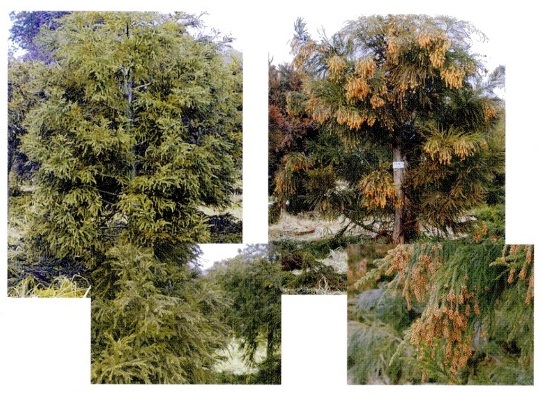 |
|
| Less-pollen variety of cedar | Ordinary cedar |
Development of less-pollen varieties of Japanese cypress
We have also selected plus trees of cypress that produce less pollens than ordinary ones.
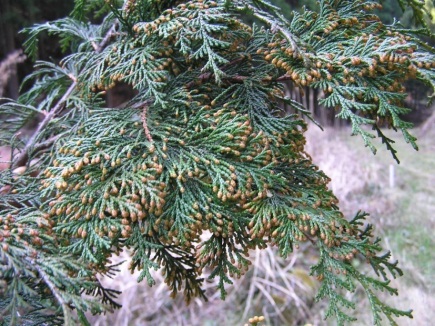 |
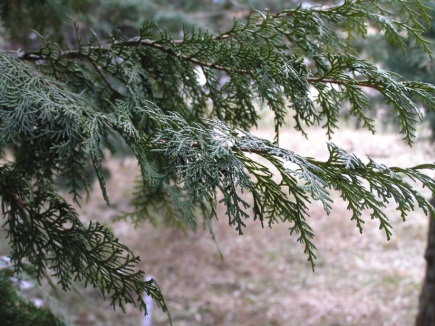 |
| Ordinary cypress bearing many male flowers | Less-pollen variety of cypress bearing no observable male flower |
Development of pollen-free varieties of Japanese cedar
A pollen-free variety was found from breeding materials in 2007 and named “Sugi Mie-Funen (Kansai) no.1”.
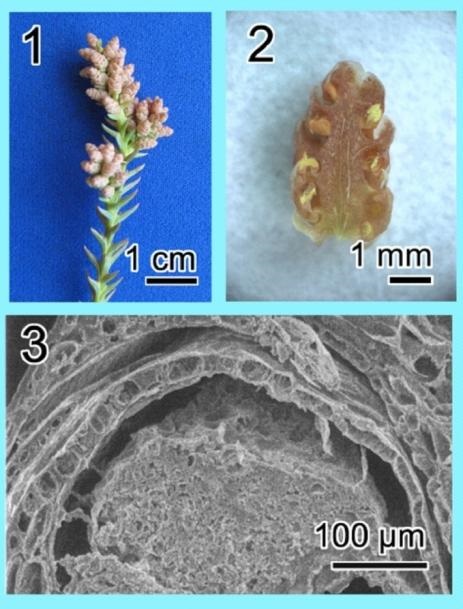 |
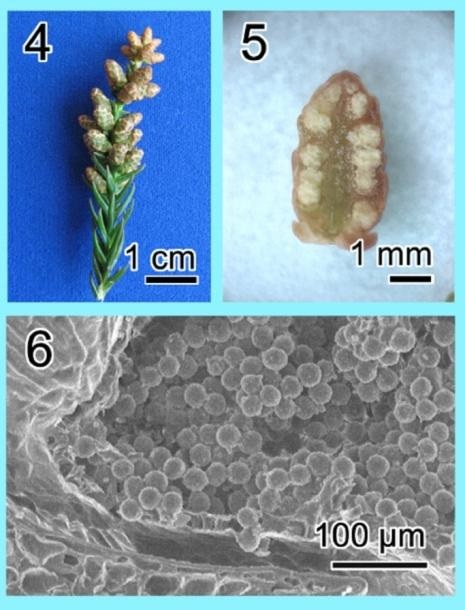 |
| Sugi Mie-Funen (Kansai) no.1 | Ordinary cedar |
Varieties with Superior Wood Quality
Survey of wood quality at progeny trial sites
Concerning the obligation of quality labeling and the standardization of dried wood materials for construction purpose, the demand for the varieties with higher wood quality is increasing. We have been measuring wood quality of each family or clone in our progeny trial sites using non-destructive tools, such as FAKOPP for Young’s modulus, Pilodyn for stiffness and FFT Analyzer for water content.
Development of varieties with superior carbon fixation ability
Varieties with greater trunk weight, or with higher carbon fixation ability, can contribute to climate change mitigation. Trunk weight can be estimated as the product of trunk volume and wood density. Based on this value, we have been selecting plus trees that can store more carbon and have developed 25 varieties of cedar by 2009. We are seeking to develop more varieties in collaboration with prefectural research centers.
2. Collection and Conservation/Preservation of Forest Tree Genetic Resources
Forest Tree Gene Bank Program
Genetic resources of forest trees provide various benefits to human activities, science and technological development. These valuable resources must be conserved and preserved for future generations, but some of them are facing the risk of genetic diversity loss, or even extinction. Therefore, we have been conducting exploration and collection of important genetic resources such as trees designated as natural treasures, endangered tree species and giant trees.
We have been working on this as part of the Gene Bank Project of the Ministry of Agriculture, Forestry and Fisheries since 1985, and since 2001 as the Forest Tree Gene Bank Program of the Forest Tree Breeding Center (FTBC).
Exploration and Collection of Forest Tree Genetic Resources
We have been collecting genetic resources of various forest trees. Our focus is on economically important species including breeding targets, giant trees, historic trees and rare species.
Collected genetic resources are preserved as seeds, pollens or planted clones propagated by cutting or grafting. We also investigate their traits over multiple years to evaluate their potential usage as genetic resources. The information is published in our open-access database for research use.
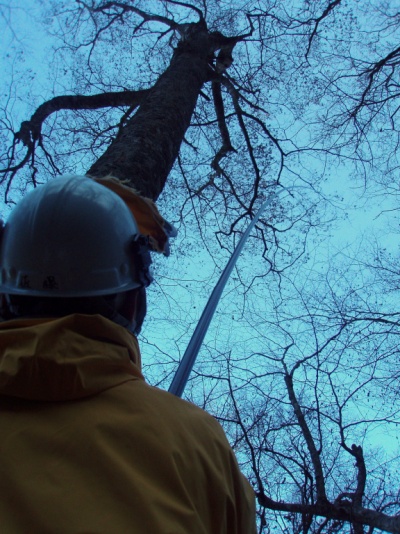 |
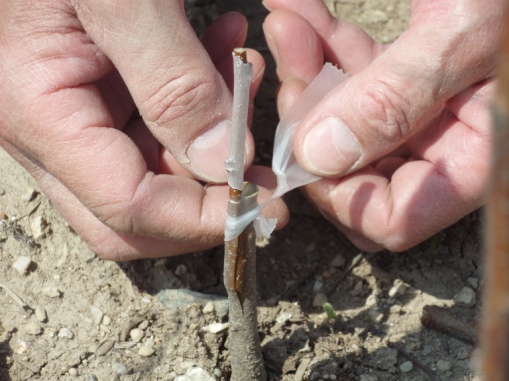 |
| Collecting scions 15 m above the ground | Grafting a chestnut scion to a rootstock |
“Emergency Call for Tree Gene Bank” Service
Heritage trees with long, distinguished histories are not only the assets of local communities, but also biological resources. Upon request for propagation of such trees, FTBC grows their clonal saplings by cutting or grafting. These saplings are returned to their original sites while some of the clones are conserved in FTBC as research materials.
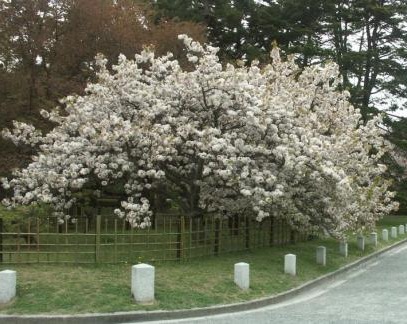 |
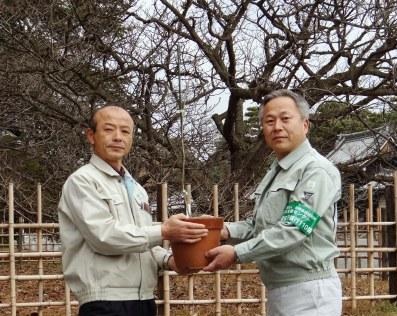 |
| Itozakura cherry of the Konoe Residence (at the Kyoto Gyoen National Garden) | Returning a clonal sapling of Itozakura cherry |
Distribution of Breeding Materials
Collected or developed breeding materials are stocked on our premises, including first and second generation plus trees of cedar and cypress, Specified Mother Trees, PWN-resistant red and black pines, pollen-free varieties of cedar, less-pollen varieties of cedar and cypress. Upon requests from the prefectural governments and other entities in the Kansai breeding region, we propagate these materials by cutting or grafting and distribute the obtained saplings to them.
Distributed clonal saplings are used to establish seed orchards or scion gardens. Seeds and scions produced in these orchards and gardens are raised to seedlings by private nursery growers, then supplied to forest owners.
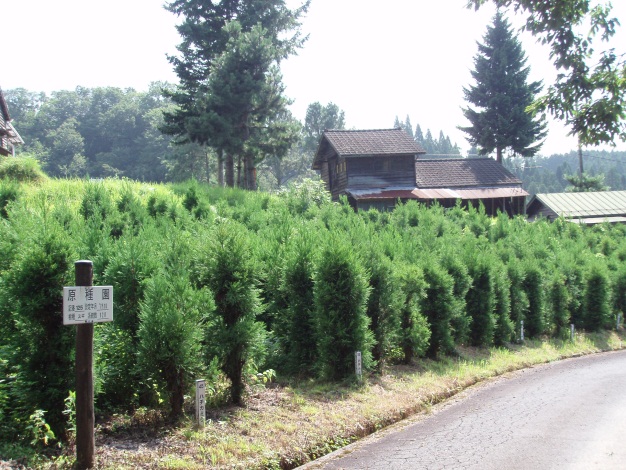 |
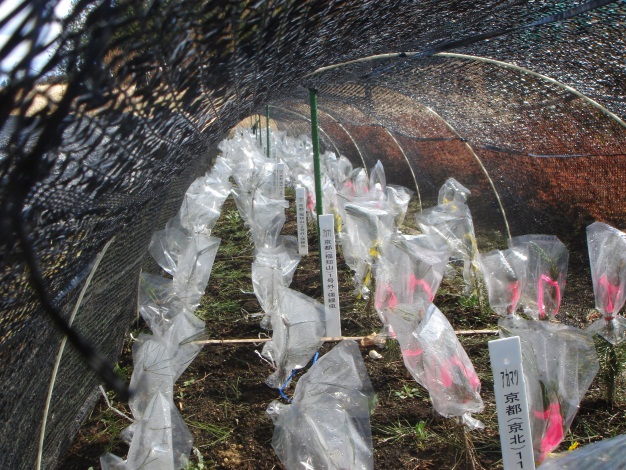 |
| Scion orchard of cedar plus trees | Propagated clones under post-grafting treatment |
Copyright © Forest Research and Management Organization. All rights reserved.
